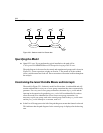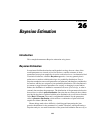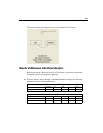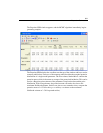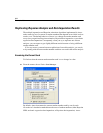
385
Example
26
Bayesian Estimation
Introduction
This example demonstrates Bayesian estimation using Amos.
Bayesian Estimation
In maximum likelihood estimation and hypothesis testing, the true values of the
model parameters are viewed as fixed but unknown, and the estimates of those
parameters from a given sample are viewed as random but known. An alternative kind
of statistical inference, called the Bayesian approach, views any quantity that is
unknown as a random variable and assigns it a probability distribution. From a
Bayesian standpoint, true model parameters are unknown and therefore considered to
be random, and they are assigned a joint probability distribution. This distribution is
not meant to suggest that the parameters are varying or changing in some fashion.
Rather, the distribution is intended to summarize our state of knowledge, or what is
currently known about the parameters. The distribution of the parameters before the
data are seen is called a prior distribution. Once the data are observed, the evidence
provided by the data is combined with the prior distribution by a well-known formula
called Bayes’ Theorem. The result is an updated distribution for the parameters,
called a posterior distribution, which reflects a combination of prior belief and
empirical evidence (Bolstad, 2004).
Human beings tend to have difficulty visualizing and interpreting the joint
posterior distribution for the parameters of a model. Therefore, when performing a
Bayesian analysis, one needs summaries of the posterior distribution that are easy to




